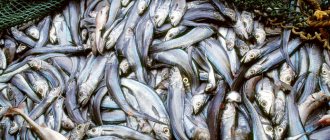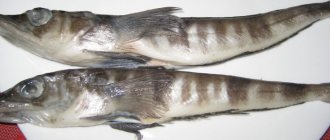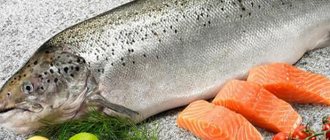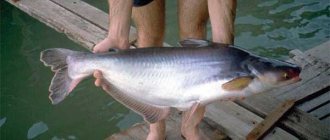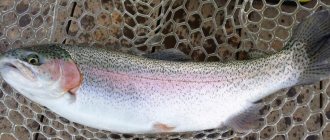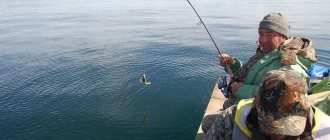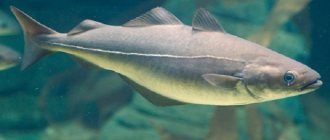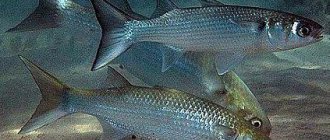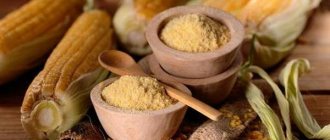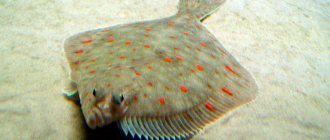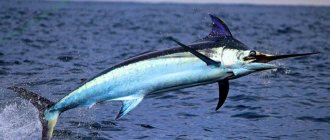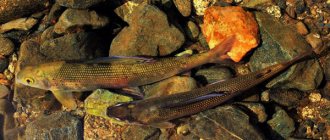Characteristics of fish
The fish spawn and release eggs in gyre zones in coastal areas. The population size depends on living conditions. Its fluctuations are within small limits. Fish are often subject to over-fishing.
Platichthys quadrituberculat (yellow-bellied flounder) is a member of the family pleuronectidae (flatfish).
The eyes of this type of fish are located on the left side of the body. The diameter of its eye is equal to the length of its snout, or even more. Behind the upper eye there are 4-6 sharp bone tubercles of a conical shape. Therefore, this yellow-bellied flounder is also called four-tufted.
Its body is wide and covered with smooth cycloid scales. The lateral line has a slight bend. The side without eyes is called the blind side. It is painted lemon yellow. The eye side is a different, brownish-brown color, with a marble-like pattern. Sometimes it has vague dark spots. The length of the fish reaches 60 centimeters, and the weight is up to 3 kg.
Where are yellow-bellied flounder common?
Basically, it lives along the Asian and American coasts. These are the directions:
- from Peter the Great Bay (only some specimens) to Providence Bay;
- from the southeastern part of the Chukchi Sea to the Gulf of Alaska;
- areas west of Cape Spencer;
- in Kotzebue Bay it is 84-88%;
- in Norton Bay - 88-91%;
- in the Bering Strait - 17-35%;
- in the Sea of Japan it is found mainly in the north;
- in the Tartary Strait (northern part) this fish is considered a common type;
- in the Sea of Okhotsk, yellow-bellied flounder is found everywhere from the coast of Hokkaido Island and Aniva Bay to the northernmost part;
- sometimes this fish is caught in the Sakhalin Gulf, near Ayan and Shantar;
- dense accumulations are found in Terpeniya Bay and Western Kamchatka;
- In the Bering Sea, its stable and relatively isolated accumulations are in the Olyutorsky, Korfo-Karaginsky, Anadyrsky bays, Natalia Bay and in the eastern part of the sea.
This type of flounder is more often found in the waters of the American coast than in the Asian one.
How to choose flounder
Russian flounder is caught mainly in Kamchatka and Murmansk. This matters when choosing fish. Our fish is preserved by simple freezing. Often, imported fish is stuffed with water or covered with a thick layer of glaze; it takes a long time to be transported to our shelves.
The main signs of quality fish:
- Fresh sea fish smells like the sea and freshness. And flounder smells like iodine. If you have been to the seashore, then you should understand what this iodine sea smell is.
- When we talk about fish, you must not forget that it should not have cataracts: its eyes should be clear, not cloudy.
- Take a look at the photo above: fresh frozen flounder is dark green in color with small orange spots. If it has lain for several days before freezing, it will have a faded, gray color.
- If, sealed in polyethylene, the glaze breaks off, such a fish is deprived of protection and spoils faster.
- Blueish veins in the fillet, plaque and black gills are a sign of low-quality fish.
- Another interesting point: its benefits depend on the size of the flounder. Large fish stay in water for a long time and accumulate a lot of heavy metals. It is better to take medium and small fish.
Biology and lifestyle
This is a sea bottom fish that lives in relatively shallow waters (up to 300 meters in the Sea of Okhotsk and the Sea of Japan). It prefers salt water and moves away from fresh areas. As you know, certain sea waters are rich in iodine. That is why flounder is yellow and when it is caught, a special smell is often heard. This is what iodine smells like.
It has the property of a fairly clear, pronounced seasonal migration. In summer, the bulk of this flounder is found at a depth of less than 100 meters. Maximum catches are usually achieved between the 20 and 70 meter isobaths. In late autumn and already in winter, fish of this species migrate to the dump, concentrating on isobaths from 100-150 meters and the water temperature at the very bottom is above 0°C. Moreover, part of it is on the middle shelf, where there are negative temperatures. The maximum fish prefers a water temperature of 3-4°C.
This fish is predatory. It eats about 107 species of small inhabitants of the aquatic environment. But worms, crustaceans and mollusks predominate in food. According to the nature of their diet, the fish belongs to the “benthophagous-polyphagous” type.
This large fish lives for approximately 22 years. The catch is dominated by flounder from 5 to 12 years old. On average, its length is 24-48 cm. The weight of such fish is 300-1400 g. Flounder is a cold-loving euryhaline species.
Off the coast of Primorye it is found almost everywhere. Peter the Great Bay is the southern limit of the yellow-bellied flounder's range.
What do yellow-bellied and white-bellied flounder have in common?
Both species are predators . Both eat almost the same. Their diet includes about 107 species of small fish . However, the fact that flounder lives on or near the bottom determines its main food product. These are usually worms, crustaceans and molluscs.
Both have characteristics characteristic of all species: displaced round eyes at the top of the body, functioning independently of each other; the body is flat, asymmetrical; slanted mouth, sharp teeth. As a rule, females in both species are larger.
Both species live in cold waters . Yellow-bellied and white-bellied are a dietary product : high in protein, low in fat, rich in minerals, vitamins, and omegas. The meat is white, with a sweetish taste, contains a lot of water, which is why the structure of the meat is soft and tender. Small bones are missing. For two types of fish, any cooking method is suitable: baking, stewing, frying, grilling.
It is recommended to cook it whole , without cutting it into pieces. Cooking fish requires little time. Any side dish will suit these types. This fish perfectly saturates the human body. It is an excellent product for people who want to lose excess weight, since meat does not contain carbohydrates. Both types are considered a hypoallergenic product. Almost everyone can eat it. The only exceptions are those people who have an individual intolerance to this fish meat and children under 1 year of age.
Any type of flounder can help a person recover from an illness or in the postoperative period. And an increased content of omega-3 fatty acids provokes the death of cancer cells.
Kinds
Yellow-bellied flounder is very similar in nutritional characteristics to yellowfin flounder.
These two species have the highest biomass. Nutritional similarity in juveniles reaches 51%.
Interestingly, there are about 570 species of flounder in the world and only three of them live in fresh water. Yellow-bellied and white-bellied flounder are found in the Seas of Japan, Bering and Okhotsk. What's the difference between them?
First of all, in the color of the blind side of the body. The white-bellied fish grows up to 50 cm, although the fish usually sold are 30-35 cm. It has a white blind side and an unusual sharp bend in the lateral line.
Comparison and differences between yellow-bellied and white-bellied flounder
- The yellow-bellied and white-bellied relatives differ in the color of their blind side (abdomen).
- The second distinguishing feature is the smell. Yellow-bellied contains more iodine than white-bellied. Therefore, the odor of the yellow-bellied one is sharper than that of the white-bellied one. For people with iodine deficiency, yellow belly fish is more beneficial than white belly fish.
- Yellow-bellied flounder is a commercial fish. A white-bellied fish gets caught in a net by accident.
However, there are no comrades for taste and color. Therefore, the choice of fish type remains with the consumer.
Cooking
White-bellied flounder is highly prized in cooking. It has white meat with the aroma of the fresh sea. It is practically without small bones and does not have a pronounced fishy smell. It is prepared in any way. Yellow-bellied and white-bellied flounder are prized in cooking. Which one tastes better is a moot point. To each his own. But white-bellied fish is often preferred due to its versatility and the absence of the specific odor of iodine.
Flounder is a dietary product. Its meat has high nutritional value and easy digestibility. It is rich in polyunsaturated fats that can protect the human body from intense aging and cancer. White-bellied and yellow-bellied flounder are no exception. The differences between these types in terms of meat value are insignificant. But we can say that yellow-bellied is more saturated with iodine. This affects cooking methods.
Composition of flounder fish
Flounder can be safely classified as a dietary product. It is low in calories - 90 kcal per 100 g, does not contain carbohydrates, and has a minimum of fat. It is rich in proteins, which are much better accepted by the human body than other animal analogues. In addition, the meat of individuals contains the following substances:
- Water.
- Ash.
- Fatty acid.
- Vitamins A, groups B, C and E.
- Minerals such as zinc, iron, nickel, molybdenum, iodine, manganese, chromium, copper, fluorine and cobalt.
This combination of substances can become a source of not only therapeutic effects, but also specific problems. Only after the benefits and harms to the body of a sea predator have been examined in detail can it be included in the diet.
Reproduction
Spawning of yellow-bellied flounder is found in all areas of its numerous aggregation. This mainly occurs at a depth of 180-200 meters. But even at greater or shallower depths you can find spawning individuals. Regarding the density of spawning aggregations, it can be noted that its high level usually does not appear.
The breeding season lasts from March to July. This is mainly the time of hydrological spring. The timing of spawning to the north shifts slightly towards summer, but in general, the period of mass spawning is May-June and, partly, the end of April. The eastern part of the Bering Sea is characterized by a typical pattern of flounder spawning at a water temperature at the bottom of 2-4°C, and at the surface - 0-1°C.
Juveniles mainly stay close to the shores, reaching depths of less than 20 meters.
Off the coast of Kamchatka, the spawning of yellow-bellied flounder forms the basis of the summer coastal trawl fishery. In the Kamchatka Gulf, this fish is caught during fishing in the coastal complex.
Useful properties of flounder
Nutritionists believe that flounder should be included in the diet of all people, regardless of age, gender and physical condition. Of course, there are several contraindications to consuming the product, but in all other cases, consuming sea fish will only bring benefits. People who introduce flounder into their diet note the following positive changes:
- The brain begins to cope better with assigned tasks. There is an improvement in the quality of attention and memory, and the ability to concentrate on tasks increases.
Advice: People suffering from vitamin and mineral deficiencies should pay attention to flounder caviar. This product, rich in chemical elements, not only meets the body’s needs on many points, but also has unique taste characteristics.
- The condition of mucous membranes, skin, teeth and bones, nails and hair improves.
- Increased levels of bad cholesterol in the blood are reduced, which stimulates the functioning of blood vessels and the heart.
- Regular consumption of fish helps prevent prostatitis and improve potency in men.
- Flounder dishes can help you get rid of depression and chronic fatigue and restore your performance.
- Flounder fish is included in the diet of people suffering from iodine and phosphorus deficiency.
- Polyunsaturated fatty acids stimulate the functioning of many organs and systems. They are especially necessary for the female body, which is subject to constant hormonal changes.
- The meat of this unique fish contains substances that are known for their ability to fight toxins and carcinogens. Their activity reduces the risk of people developing many serious diseases.
- The presence of fish in the diet is justified during increased physical or mental stress during pregnancy. Its properties will be useful to people recovering from illness or surgery.
- Including the product in the menu of older people reduces the likelihood of them developing cancer, pathologies of the heart and blood vessels.
Why does flounder have a yellow belly, and how can you tell whether it’s fresh or not?
This is a large fish: on sale it is found up to 40 centimeters in length. Its distinctive feature is the yellow, even lemon, color of the blind side of the body. Flounder is a commercial fish. It contains a large amount of minerals and vitamins and is rich in Omega-3. The high iodine content gives meat special value.
Therefore, people with a deficiency of this microelement are recommended to eat this flounder on a regular basis. When this fish is fresh, it has a specific odor of iodine. This is how quality is determined when purchasing. If the yellow color is not in the fish itself, but in the form of a coating formed on the surface of the carcass, then the flounder should not be eaten. This indicates that the product has been frozen multiple times.
Understanding why flounder has a yellow belly, what the fresh fish smells like, and how its own color differs from the plaque that forms will protect the buyer from adverse health consequences. You should always be careful when buying fish, as poisoning with this product is very dangerous.
What's the benefit?
In terms of taste, all types of flounder are not particularly different from each other. This is a low-calorie fish, contains 20% healthy proteins and only a few percent of easily digestible fats, making it an excellent dietary dish. According to some reports, flounder meat can increase male potency.
This fish perfectly improves immunity, supports a weakened body, protects against harmful environmental factors, and has a beneficial effect on the condition of the skin, nails, hair and teeth. Thanks to the phosphorus salts in its composition, it prevents the development of cancer, and the content of Omega-3 polyunsaturated fatty acids is useful for people with cardiovascular diseases.
Flounder has no contraindications, with the exception of general allergic reactions to fish.
Market and catch
Yellow-bellied flounder is available for sale frozen or fresh. Freezing can be either with or without glaze. In addition, you can find flounder on sale in ready-made form: salted, dried, smoked (spiced, cold or hot cooked).
It is caught from the shore with carp rods and feeders, and from a boat using the vertical trolling method. For sea fishing, special equipment is recommended. These are sea fishing rods that are more resistant to salt water.
The bait is any protein food. For example, small fish, shellfish, crabs, worms and squid. Some fishermen manage to catch flounder even with sausage.
Special gear that is popular for such fishing is longitudinal cords: a nylon cord with a heavy sinker attached to one end and a buoy to the other. Its length is equal to the depth at the fishing site (approximately). A separate piece of fishing line, leashes with hooks and bait (up to 4 pieces) are tied to the weighted end.
Cooking methods
The energy value of this fish is 82 Kcal per 100 g. Its meat is white and soft, but watery. It is best to cook flounder whole. Most often it is fried. But popular methods of cooking are in the oven or on the grill.
The carcass cooks very quickly. In principle, it is good in any form, even boiled. Therefore, fish soups are prepared from it. Every dish has its own admirer. The main thing is that flounder is a very healthy fish and you should definitely have it in your diet.
Chemical composition, calorie content per 100 grams, nutritional value
Flounder is so rich in vitamins, minerals and nutrients that it can compete with vitamin complexes. The absence of carbohydrates, zero glycemic index and low calorie content allows it to be used in dietary nutrition even by people with diabetes.
The energy value and calorie content per 100 g of flounder fillet is only 80-90 kcal.
The bulk consists of:
- complete proteins;
- healthy fats;
- Omega-3 fatty acids;
- cholesterol;
- water;
- ash.
Meat also contains nicotinic and pantothenic acids, thiamine, riboflavin, and pyridoxine.
Vitamin content per 100 grams:
| Name | Amount, mg | Consumption rate (per adult), mg/day |
| A | 0,015 | 1 |
| IN 1 | 0,14 | 2 |
| AT 2 | 0,15 | 2,4 |
| AT 3 | 2 | 1,8 |
| AT 6 | 0,1 | 2 |
| 0,006 | 1 | |
| AT 12 | 0,0012 | 2,4 |
| WITH | 1 | 60 |
| E | 1 | 10 |
| RR | 5 | 20 |
Content of minerals and trace elements per 100 grams:
| Name | Amount, mg | Consumption rate (per adult), mg/day |
| Iron | 0,7 | 10 – 20 |
| Chromium | 0,055 | 0,05 – 0,2 |
| Phosphorus | 0,18 | 0,8 |
| Zinc | 0,45 | 0,015 |
| Manganese | 0,05 | 2 – 5 |
| Iodine | 0,05 | 0,1 – 0,2 |
| Cobalt | 0,02 | 0,04 – 0,07 |
| Copper | 0,011 | 1,5 – 3 |
| Nickel | 0,006 | 0,05 |
| Fluorine | 0,043 | 0,6 |
| Molybdenum | 0,004 | 0,045 |
